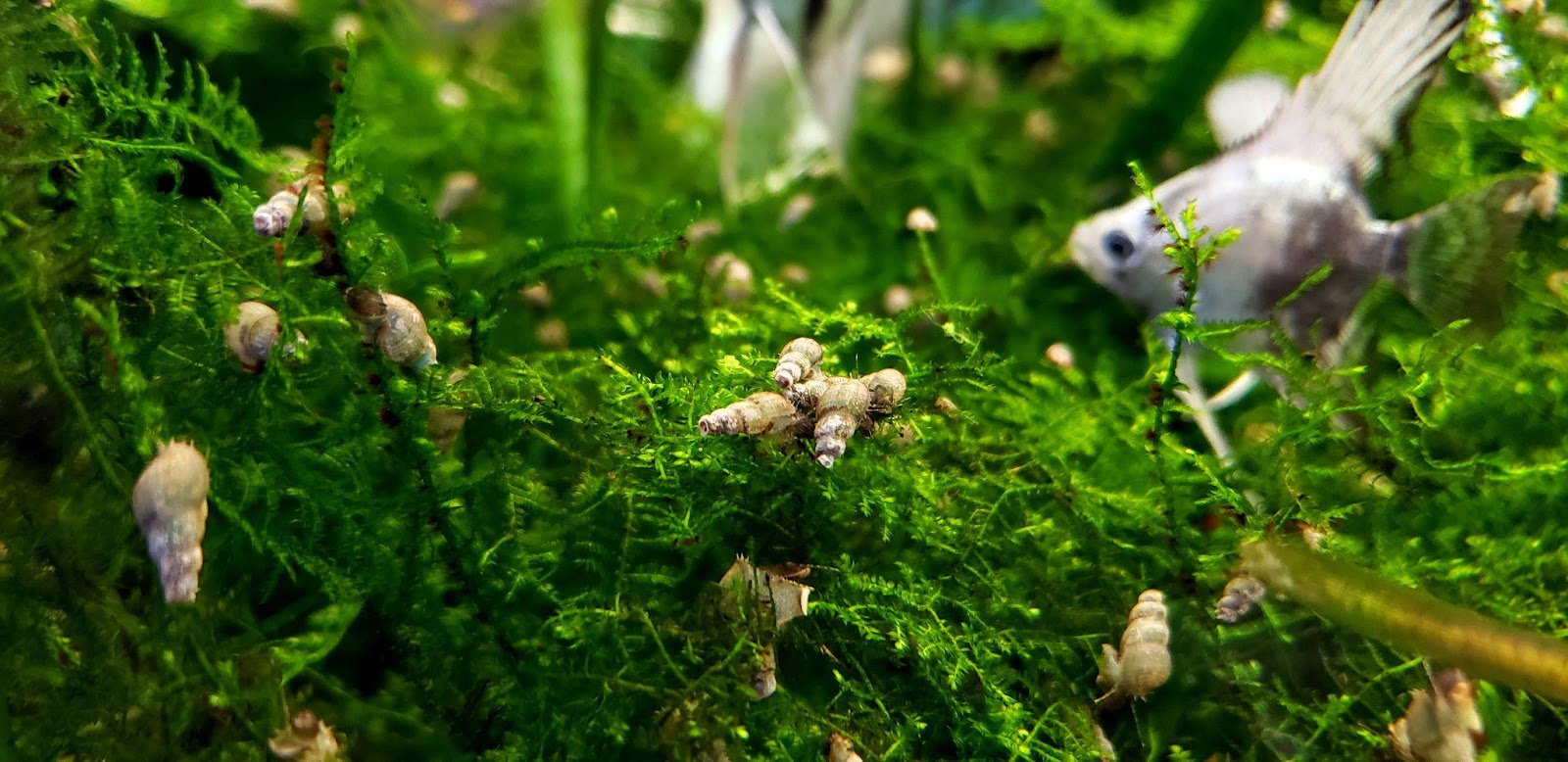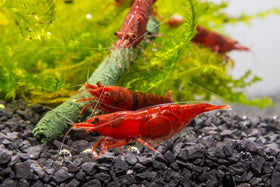
How to Remove Pest Snails from Your Aquarium
Written by: Tammy (@aquarist_tl) and Team Buce Plant
If you’re having a pest aquarium snail infestation in your tank that’s getting out of control, then keep reading! A large number of snails can not only make planted aquarium maintenance more stressful, but it can seem as though there are snails in every spot of the aquarium you look at!
Don't be discouraged - this overpopulation is a common occurrence. If you’d like to learn more about pest snails like where they came from or the common types, feel free to check out All About Pest Snails in the Planted Aquarium.
- Note: Although a large number of snails can be unsightly, it is a misconception that aquarium snails are actual "pests." Don't be bothered by seeing a couple here and there. They are quite helpful for your planted aquarium's ecosystem and their population can be managed with the right practices.

It's time to learn how to get rid of the abundance of snails that are taking over and causing you headache. This article will go over a few ways of controlling and lowering the pest snail population (ie. bladder snails, trumpet snails, ramshorm snails) in your planted tank.
We will go over three main methods of managing the amount of snails in your aquarium:
1. Prevention
2. Reduction
3. Removal
Each of these methods have multiple procedures that can be done to achieve the goal of cutting down the number of pest snails you have.

1. Prevention
The best way to control a pest infestation in an aquarium is to avoid bringing them into our tanks in the first place. If it’s already too late, we can at least stop ourselves from adding any more into the mix.
They enter our aquariums by stowing away on items we place into the tank. Also, aquarium snails lay eggs that are usually difficult to spot in the aquarium. For example, if you get an ornament from a friend that has snails in their aquarium, snail and their eggs can hitch a ride from their tank to yours. However, the main thing they like to stow away on are aquarium plants.
Here are two strategies you can implement to prevent snails from entering the aquarium:
Quarantining Aquarium Plants
If you’d like a more detailed read, you can check out How to Quarantine New Aquarium Plants. In summary, these snails are a natural part of the environment and somewhat inevitable when dealing with live aquatic plants.
When you receive new plants for your tank, you should sterilize them in some sort of dip (e.g. bleach, hydrogen peroxide, alum). This dip will kill off any snails as well as their eggs. It also should clean the plants of any algae, disease, or parasites. After sterilizing, place them in a container of water and make sure they’ll have a led light source to continue growing. Observe the plants for about 3 weeks to make sure you don’t see any snails pop up.
Tissue Culture Plants
Tissue culture, or in-vitro plants, are created in sterilized labs and are completely sterilized from the start. They’re guaranteed to be 100% free of pests, algae, and pesticides! If you want to play it safe and don’t want to have to quarantine your plants, look into their tissue culture versions.

2. Reduction
In terms of reduction, I mean controlling the population of the aquatic snails. In order to keep the amount of pests in the aquarium low, the best way is to decrease the amount of available food for them. Their population can only grow if they have enough food to sustain them and their offspring. Here are two ways of reducing their numbers:
Avoid Overfeeding
Overfeeding fish is pretty common in the hobby. There’s usually some fish that are slower than others to get to the food, so many hobbyists will feed extra to ensure everyone gets a full belly.
Although, snails are scavengers that will eat any leftover fish food that they find, so overfeeding will help their population grow rapidly. If you’re worried that not all fish are getting enough food, keep in mind that fish actually don’t need to eat that much. Adult fish can go for days without food and still thrive.
Keep Up with Tank Maintenance
Snails are detritivores, meaning they eat decaying organic matter like rotting plants or fish waste. They can also snack on some soft algae. Since these are all food sources to them, we can reduce their numbers by keeping our aquariums clean.
During maintenance, make sure to remove any dying leaves and gravel vacuum as much detritus from the substrate as possible. Scrape off any algae you see on the walls of the tank and brush any algae off you may spot on rocks or wood in the aquarium. By doing all this, the tank will look nicer AND the pest snail population will be more controlled.

3. Removal
When all else fails, physical removal of these pests must be done. Here are two routes you can take for removing snails from the tank:
Manual Removal/Snail Traps
If it’s still in the early stages of the snail infestation, you may try simply removing every snail you see from the aquarium with your hands. It’s possible to remove them all and prevent them from reproducing if they’re caught early on.
However, this usually isn’t the case since they can reproduce rapidly and can easily hide in the tank. If the pest population is out of control, try snail traps. They are very simple to make at a low cost.
For example, use a piece of romaine lettuce (make sure it’s clean and safe to put into the aquarium) at the bottom of the tank. Wait an hour or so for the snails to come out and start feasting on it. Once there’s a large amount of them, simply lift the lettuce out of the water and dispose of them.
Natural Predators

Yoyo loach
There’s no labor like free labor! Under the right conditions, you can add certain snail-eating species of fish or even other snails to remove these pests from the tank. Loaches and pufferfish are well-known for eating snails. There’s also the assassin snail, a carnivorous snail that will feed on other snails. Careful with these guys though, as you may end up with an overpopulation of assassin snails instead!
Before approaching this overall method of using natural predators, please do research on whichever fish you’re thinking of adding into your fish tank! Some of these snail-eating species can be aggressive or grow larger than you’d expect.

While pest snails are harmless, they can be an eyesore when there’s too many in the tank. May this info help you with reducing their numbers!
Tell us - Was this article helpful? Please comment your thoughts below!
If you have any questions regarding this article, please DM us on Instagram or Facebook so we can assist you - @buceplant





Comments
Leave a comment